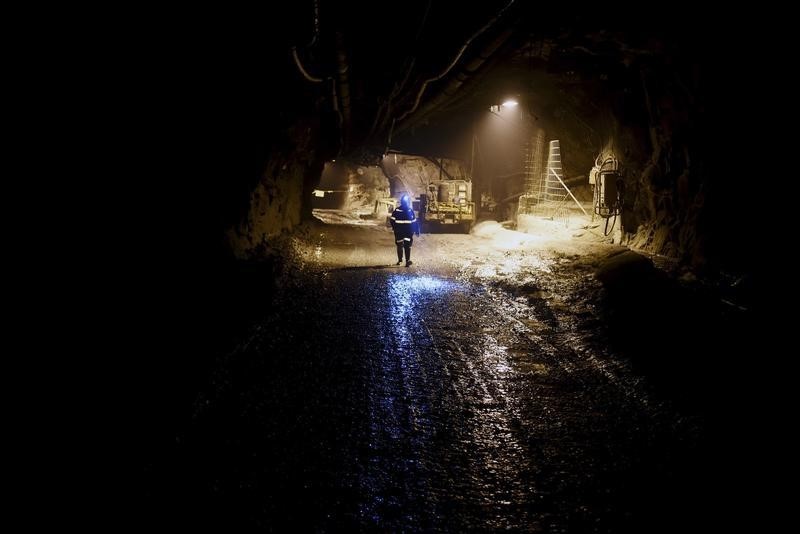The language used to describe the various stages of mineral deposit assessment is both precise and technical. It's a lexicon that defines the confidence in geological assessment and the economic viability of extraction.
At the heart of this lexicon are the terms "indicated resource," "inferred resource," "proven reserve," and the guiding principles of reporting standards such as the JORC Code and NI 43-101.
Inferred
On the lower end of the confidence spectrum is an "inferred resource." This classification implies that the quantity and grade of the deposit are predicted on limited geological evidence and sampling.
While inferred resources are too speculative to have economic considerations applied to them, they are considered a crucial early step in the resource definition process, indicating potential for further exploration.
Indicated
An "indicated resource" is a category within the broader classification of mineral resources. It signifies a medium level of geological certainty regarding the size and grade of the deposit.
To qualify as an indicated resource, the density and quality of data from exploration and sampling activities must be sufficient to allow for the confident prediction of continuity in both tonnage and grade between points of observation.
Essentially, an indicated resource is one where geologists can estimate the quantity and quality of the material to a reasonable degree of reliability, often using detailed geological and engineering information.
Proven reserves
In stark contrast to these resource categories stands the "proven reserve," the crème de la crème of mineral classifications.
Proven reserves have passed the critical test of economic viability. Not only is the geological evidence firm and the quality and quantity of the deposit well established, but the extraction of the material is also technically feasible and financially profitable under current market conditions.
In the proven reserve category, the highest degree of confidence is placed on the mineral content, and the mining method is usually determined.
JORC Code
The bridge between geological assessment and the investor's need for transparency and reliability in reporting is provided by codes of practice like the Australasian Joint Ore Reserves Committee (JORC) Code.
The JORC Code sets the standards for reporting mineral exploration results, mineral resources, and ore reserves in Australia. Its guidelines dictate the manner in which the results of the mineral exploration and resource assessment are reported, ensuring that they are reliable, consistent, and verifiable.
The JORC Code requires a "competent person," a professional with suitable qualifications and experience, to sign off on the reports. It emphasizes clear, unambiguous, and transparent reporting of the exploration results and assessments.
The JORC Code is not static; it evolves to reflect the changing practices of the industry, ensuring that it remains relevant and effective.
NI 43-101
Comparable to the JORC Code is Canada's National Instrument 43-101 (NI 43-101), a regulatory framework governing the disclosure of scientific and technical information about mineral projects.
While the JORC Code and NI 43-101 share the goal of fostering transparent and accurate public reporting, there are differences in their approach and specific requirements.
One significant difference lies in the treatment of inferred resources. The JORC Code allows companies to include inferred resources in economic studies, while NI 43-101 typically prohibits the inclusion of inferred resources in initial economic assessments.
Moreover, NI 43-101 requires a formal report, known as a Technical Report, to be filed with regulatory authorities, whereas the JORC Code does not have such a requirement but insists on the disclosure being made in the context of the entire project.
Pivotal roles
Both the JORC Code and NI 43-101 play pivotal roles in the global mining industry, influencing investment decisions and underpinning investor confidence.
They represent rigorous standards for the classification of mineral resources and reserves, providing a common language for the reporting of exploration results that facilitates comparison between projects and across international borders.
And finally...
Understanding the distinction between indicated and inferred resources, proven reserves, and the reporting standards that govern their disclosure is essential for stakeholders in the mining industry.
These classifications and standards not only delineate the level of confidence in geological assessments but also serve as the bedrock of ethical and transparent communication in a sector where the stakes are high and the risks significant.
They are the vital components that help turn geological potential into economic reality, providing a clear path from exploration to extraction and ultimately to profit.
